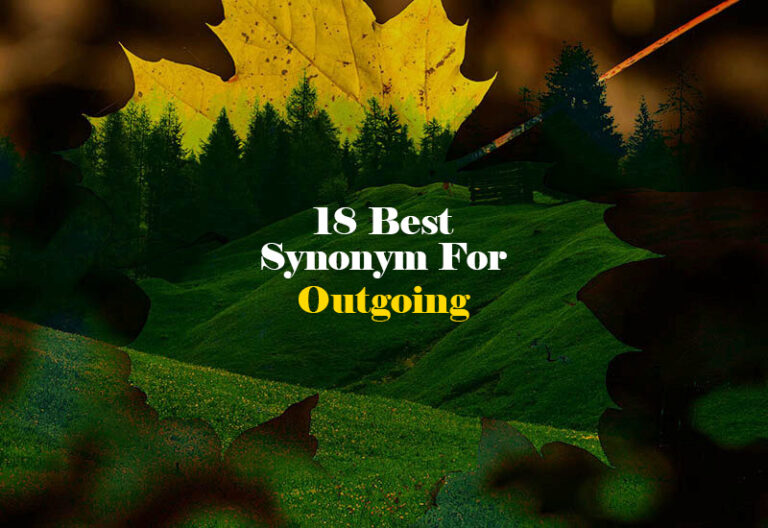You probably use the word “some” all the time, right? But sometimes (see what I did there?), it’s fun to change things up a bit. Whether you’re writing a story, talking to a friend, or just want to sound more interesting, there are so many other ways to say “some.” In this blog post, we’ll look at 17 awesome and great words you can use instead of “some.”
1. A few
“A few” means a small number of things or people. It’s more than one but not too many. It’s often used when you want to say there is a small, countable group. For example, “I bought a few apples from the market” means you got more than one apple, but not a big bag full. This phrase is very common in everyday speech and writing. You can also say things like, “We invited a few friends to the party.” It’s a great way to talk about a small amount without being too exact or specific.
2. Several
“Several” means more than two or three, but still not a lot. It’s more than “a few” but not a huge number. You can use it when talking about people, items, or actions. For example, “I saw several birds in the park this morning” shows there were quite a few birds, but you’re not counting them exactly. Another example is, “She has several books about cooking.” It’s a useful word when you don’t need to give an exact number, but still want to show that it’s more than just one or two.
3. Certain
“Certain” is used when you’re talking about specific things or people, but you don’t want to name them. It adds a little mystery! For example, “Certain people didn’t like the idea.” You’re not saying who, just that some people felt that way. It can also mean something you’re sure about, like, “I’m certain he will come.” But when used like a synonym for “some”, it means particular or specific ones, not all. It’s a nice word when you want to be clear without pointing fingers or naming names.
4. Various
“Various” means many different types of something. You can use it when there are different kinds of people, things, or ideas. For example, “We tried various kinds of chocolate at the festival.” That means you didn’t just eat one type — you tasted different ones. Another way to use it: “She has various hobbies, like painting, hiking, and reading.” It’s a great word to show that there’s a mix of things. Use it when you’re talking about a few things that aren’t all the same.
5. A number of
“A number of” is a nice way to say “some” when you’re talking about more than one person or thing. For example, “A number of people were late to the meeting.” This doesn’t tell the exact number, but we know it’s not just one or two. It’s used in both writing and speaking. Another example: “We visited a number of cities during our trip.” It’s a polite and simple way to say “some” without sounding too casual or too exact. It works well in most types of writing.
6. A handful of
“A handful of” means a small amount, usually just enough to fit in your hand! It’s often used in casual talk to describe a small group or quantity. For example, “Only a handful of students passed the test.” That means not many. You can also say, “He brought a handful of berries from the garden.” It paints a clear picture of something small and easy to count. It’s a fun and friendly way to talk about a little bit of something without sounding too serious or formal.
7. A bit of
“A bit of” is used when talking about a small amount of something. It’s not much, but it’s there. For example, “Can I have a bit of cake?” means you only want a small piece. Another example: “There’s a bit of confusion about the rules.” It means there’s some confusion, but not a lot. This phrase is very common in both speaking and writing. It’s great when you want to sound casual and not too exact. People use it all the time to soften what they’re saying.
8. A little
“A little” means a small amount, and it’s used with things you can’t count easily, like water, sugar, or time. For example, “There’s a little milk left in the fridge.” That means not much, but it’s still there. You can also say, “He needs a little help with his homework.” It sounds polite and gentle. It’s a good way to say “some” when you don’t want to sound rude or too strong. It works well in both talking and writing, especially when being kind matters.
9. A couple of
“A couple of” usually means two of something, but sometimes people use it to mean a small few. For example, “I’ll be back in a couple of minutes.” That usually means about two, maybe three. You can also say, “We watched a couple of movies last night.” It’s a friendly and casual way to talk about a small number. It’s not exact, so people use it when they don’t need to be super clear. It sounds relaxed and fits everyday speech very well.
10. A part of
“A part of” means a piece or section of something larger. For example, “He spent a part of his life living abroad.” That means he didn’t live there forever, just for some time. Another example: “Only a part of the puzzle is finished.” It’s helpful when you want to show that you’re talking about a piece, not the whole thing. This phrase works well when writing about time, work, or objects. It helps people understand that you’re not talking about everything—just some of it.
11. Part of
Just like “a part of”, “part of” also means some but not all. It’s used to show that something belongs to a larger thing. For example, “She is part of the team.” That means she belongs to the team, but she’s one person in a group. Another example: “Part of the cake was eaten.” So, someone ate some but not the whole cake. This phrase is common and simple. It’s great when you want to explain that something is only a little piece of something bigger.
12. An amount of
“An amount of” is used to talk about how much of something there is. It’s often used with things you can’t count, like money, sugar, or time. For example, “There’s an amount of money missing.” That means some money is gone, but we don’t say how much. Another example: “We used an amount of flour to bake the cake.” It’s a useful way to say “some” without giving a number. This phrase is more common in writing, especially when you want to sound polite or formal.
13. A portion of
“A portion of” means a part or share of something, often used with food or tasks. For example, “I ate a portion of the pasta.” That means you didn’t eat all of it, just some. Another example: “Each person was given a portion of the prize.” It helps show fairness or division. It’s a polite and useful way to talk about a piece or amount of something, and it works well in both everyday speech and more formal writing.
14. A selection of
“A selection of” means a group of chosen items. It’s used when you’re talking about some things picked from a larger group. For example, “We offer a selection of fresh juices.” That means not all juices, just some special ones. Another example: “She brought a selection of her best clothes.” It sounds a little more fancy than just saying “some.” It’s a great phrase for menus, stores, or any time you want to describe a few special items out of a larger collection.
15. A batch of
“A batch of” means a group or set of things made or done at one time. It’s often used in cooking or when making something. For example, “I baked a batch of cookies this morning.” That means you made some cookies in one go. Another example: “We printed a batch of flyers for the event.” It’s helpful when you want to talk about a group of items that were made or prepared together. This word feels very friendly and is often used in everyday life.
16. A group of
“A group of” means a collection of people or things. It’s often used to talk about people or animals. For example, “A group of kids were playing in the park.” That means more than one child. Another example: “We saw a group of birds flying together.” It’s a very useful phrase when you want to describe many things or people that are together. It’s simple and works well in almost every situation, whether you’re speaking or writing.
17. A bit
“A bit” means a small amount of something. It’s similar to “a little” or “a touch of.” For example, “Can I have a bit of your sandwich?” That means just a small piece. Another example: “He felt a bit tired after the game.” It helps make your words softer and more casual. People often use it when they don’t want to sound too strong or serious. It’s perfect for friendly chats and works well in daily conversation.

Final Thoughts
Learning different ways to say “some” makes your English more fun and more interesting. Each of these words helps you express things more clearly or politely. Whether you’re talking about a small amount of cake, a group of friends, or just a little help, these synonyms give you the right words to match the moment. Try using them in your daily life or your writing. The more you use them, the more natural they will feel. So go ahead and try out your new favorite way to say “some” today!





